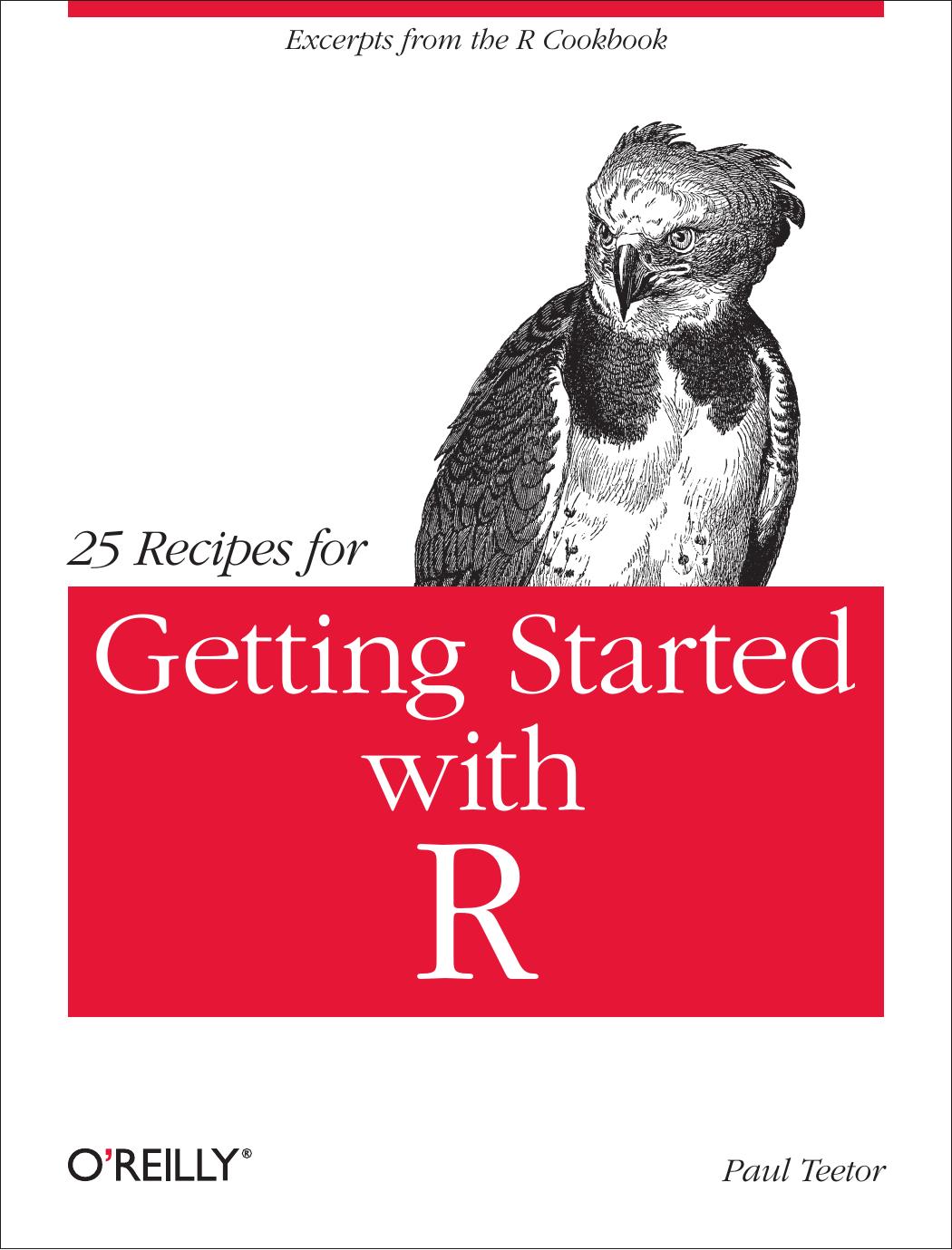25 Recipes for Getting Started with R by Paul Teetor

Author:Paul Teetor
Language: eng
Format: epub, pdf
Tags: Data Visualization
ISBN: 9781449303235
Publisher: O'Reilly Media, Inc.
suburbs[[1]]
This returns one column.
suburbs[1]
This returns a data frame, and the data frame contains exactly one column. This is a special case of dfrm[c(n1,n2, ..., nk)]. We don’t need the c(...) construct because there is only one n.
The point here is that “one column” is different from “a data frame that contains one column.” The first expression returns a column, so it’s a vector or a factor. The second expression returns a data frame, which is different.
R lets you use matrix notation to select columns, as shown in the Solution. But an odd quirk can bite you: you might get a column or you might get a data frame, depending which many subscripts you use. In the simple case of one index you get a column, like this:
> suburbs[,1] [1] "Chicago" "Kenosha" "Aurora" "Elgin" [5] "Gary" "Joliet" "Naperville" "Arlington Heights" [9] "Bolingbrook" "Cicero" "Evanston" "Hammond" [13] "Palatine" "Schaumburg" "Skokie" "Waukegan"
But using the same matrix-style syntax with multiple indexes returns a data frame:
> suburbs[,c(1,4)] city pop 1 Chicago 2853114 2 Kenosha 90352 3 Aurora 171782 4 Elgin 94487 5 Gary 102746 6 Joliet 106221 7 Naperville 147779 8 Arlington Heights 76031 9 Bolingbrook 70834 10 Cicero 72616 11 Evanston 74239 12 Hammond 83048 13 Palatine 67232 14 Schaumburg 75386 15 Skokie 63348 16 Waukegan 91452
This creates a problem. Suppose you see this expression in some old R script:
dfrm[,vec]
Download
25 Recipes for Getting Started with R by Paul Teetor.pdf
This site does not store any files on its server. We only index and link to content provided by other sites. Please contact the content providers to delete copyright contents if any and email us, we'll remove relevant links or contents immediately.
Algorithms of the Intelligent Web by Haralambos Marmanis;Dmitry Babenko(8529)
Test-Driven Development with Java by Alan Mellor(7438)
Data Augmentation with Python by Duc Haba(7330)
Principles of Data Fabric by Sonia Mezzetta(7076)
Learn Blender Simulations the Right Way by Stephen Pearson(7018)
Microservices with Spring Boot 3 and Spring Cloud by Magnus Larsson(6835)
RPA Solution Architect's Handbook by Sachin Sahgal(6249)
Hadoop in Practice by Alex Holmes(6038)
The Infinite Retina by Robert Scoble Irena Cronin(5952)
Jquery UI in Action : Master the concepts Of Jquery UI: A Step By Step Approach by ANMOL GOYAL(5878)
Big Data Analysis with Python by Ivan Marin(5742)
Life 3.0: Being Human in the Age of Artificial Intelligence by Tegmark Max(5410)
Pretrain Vision and Large Language Models in Python by Emily Webber(4701)
Infrastructure as Code for Beginners by Russ McKendrick(4482)
WordPress Plugin Development Cookbook by Yannick Lefebvre(4213)
Functional Programming in JavaScript by Mantyla Dan(4129)
The Age of Surveillance Capitalism by Shoshana Zuboff(4124)
Embracing Microservices Design by Ovais Mehboob Ahmed Khan Nabil Siddiqui and Timothy Oleson(4004)
Applied Machine Learning for Healthcare and Life Sciences Using AWS by Ujjwal Ratan(3980)
